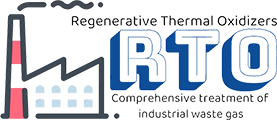How to prevent corrosion in RTO systems for the printing industry?
Invoering
Corrosion is a prevalent issue in RTO (Regenerative Thermal Oxidizer) systems used in the printing industry. This article aims to provide comprehensive insights into the various aspects and strategies for preventing corrosion in RTO systems. By understanding the causes of corrosion and implementing effective preventive measures, printing industry professionals can ensure the longevity and optimal performance of their RTO systems.
Understanding Corrosion in RTO Systems
– Corrosion is the deterioration of materials caused by chemical reactions with the environment, leading to structural damage and decreased efficiency.
– In RTO systems, the presence of corrosive gases, such as sulfur dioxide and hydrogen chloride, can accelerate corrosion processes.
– Corrosion in RTO systems can result in increased maintenance costs, decreased system lifespan, and potential safety hazards.
Factors Influencing Corrosion
1. Gas Composition
– Corrosive gases released during printing processes, such as volatile organic compounds (VOCs), can contribute to corrosion.
– High levels of sulfur compounds or halogens in the exhaust gas can intensify the corrosive environment.
2. Operating Temperature
– Elevated operating temperatures within RTO systems can promote corrosion reactions.
– The formation of condensation at lower temperatures can also contribute to localized corrosion.
3. Airflow Dynamics
– Irregular airflow patterns or stagnant zones within the system can create areas prone to corrosion.
– Uneven distribution of corrosive gases can lead to localized corrosion on certain components.
Preventive Measures
1. Material Selection
– Choosing corrosion-resistant materials, such as stainless steel or coated alloys, for the construction of RTO system components can mitigate corrosion risks.
– Coatings like Teflon or epoxy can provide an additional protective layer.
2. Gas Treatment
– Implementing effective gas treatment processes, such as scrubbers or activated carbon filters, can remove or reduce corrosive gases before they enter the RTO system.
– Regular monitoring and maintenance of gas treatment equipment is vital to ensure optimal performance.
3. Temperature Control
– Maintaining optimal operating temperatures within the RTO system can minimize corrosion.
– Insulating critical components and providing adequate ventilation can prevent condensation and reduce the potential for corrosion.
4. Adequate Airflow Design
– Proper airflow design, including uniform distribution and elimination of stagnant zones, can prevent the accumulation of corrosive gases.
– Regular inspections and cleanings of ductwork and heat exchangers can ensure optimal airflow and minimize corrosion risks.
Conclusie
Preventing corrosion in RTO systems for the printing industry is crucial for maintaining system efficiency and longevity. By understanding the factors influencing corrosion and implementing appropriate preventive measures, such as material selection, gas treatment, temperature control, and airflow design, printing industry professionals can mitigate corrosion risks and ensure the smooth operation of their RTO systems.


Bedrijfsintroductie
We are a high-tech enterprise specializing in the manufacturing of advanced equipment for the comprehensive management of volatile organic compounds (VOCs) exhaust and carbon reduction energy-saving technology in the printing industry.
Core Technologies
- Thermal energy, combustion, sealing, and self-control
- Temperature field simulation and air flow field simulation modeling
- Performance testing capabilities of ceramic heat storage materials, zeolite molecular sieve adsorbents, and high-temperature incineration and oxidation of VOCs
Teamvoordelen
With a research and development center for RTO technology and waste gas carbon reduction engineering technology center in Xi’an, and a 30,000m2 production base in Yangling, we are a leading manufacturing company in the global RTO equipment and zeolite molecular sieve wheel equipment industry. Our core technical team comes from the Aerospace Liquid Rocket Engine Research Institute (Aerospace Sixth Institute). The company currently has more than 360 employees, including over 60 R&D technical backbones, including 3 senior engineers, 6 engineers, and 47 thermodynamics doctors.
Kernproducten
Our core products include the Rotary Valve Regenerative Thermal Oxidizer (RTO) and zeolite molecular sieve adsorbent concentration wheel. Combined with our expertise in environmental protection and thermal energy system engineering technology, we can provide customers with comprehensive solutions for industrial waste gas treatment, carbon reduction, and thermal energy utilization under various operating conditions.
Certifications, Patents, and Honors
- Certificering van het Intellectueel Eigendomsbeheersysteem
- Certificering van kwaliteitsmanagementsysteem
- Certificering van milieumanagementsystemen
- Kwalificatie voor ondernemingen in de bouwsector
- Hightech-onderneming
- Patent for Rotary Valve Regenerative Thermal Oxidizer (RTO)
- Patent for Rotary Zeolite Thermal Incineration Device
- Patent for Disc Zeolite Wheel

Choosing the Right RTO Equipment
- Determine the characteristics of the exhaust gas
- Understand local regulations and emission standards
- Energie-efficiëntie evalueren
- Houd rekening met de werking en het onderhoud
- Budget- en kostenanalyse
- Select the appropriate RTO type
- Houd rekening met milieu- en veiligheidsfactoren
- Prestatietesten en verificatie

Service Process
- Preliminary consultation, site inspection, and requirement analysis
- Oplossingsontwerp, simulatiemodellering en oplossingsbeoordeling
- Customized production, quality control, and factory testing
- Installatie, inbedrijfstelling en trainingsdiensten op locatie
- Regelmatig onderhoud, technische ondersteuning en levering van reserveonderdelen
We are a one-stop solution provider with a professional team that tailors RTO solutions to meet the specific needs of our customers.
Auteur: Miya
